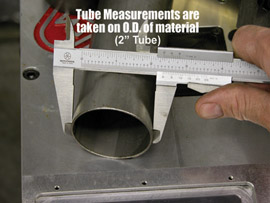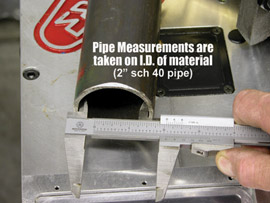What is the difference between pipe and tube? If you are not familiar with the unique features of pipes and tubes, it can be difficult to discern how they are different. There are, in fact, several differences, which we outline below. At Ercolina, we want you to stay educated and understand these distinctions so you can make the right decision before you purchase a bending machine for your projects.
The terms “pipe” and “tube” are often used interchangeably, but there are several differences between them.
- Pipe is always cylindrical or round, but tubes can come in different profiles like square, rectangular and cylindrical.
- Pipe is measured using schedule and the inside diameter (I.D.) of material (2 inch sch. 40 pipe measures 2.375 inches O.D.) while tube is measured by outside diameter (O.D.) and wall thickness of material (2 inch tube measures 2.00 inches O.D.).
- Tube is often used in applications that require precise outside diameters.
- Because pipe is often used to carry fluids that must be contained, it has a pressure rating and schedule to indicate its strength.
- The wall thickness of tubes increase in standard increments. Since pipe thickness depends on the schedule, there is no fixed increment.
Knowing your material’s true dimensions is key to selecting the proper machine and tooling for your application.
Tube sizes are based on O.D., and wall thickness is referred to in gauge sizes.
Pipe sizes are measured by I.D., with wall thickness referred to in terms of schedule.



